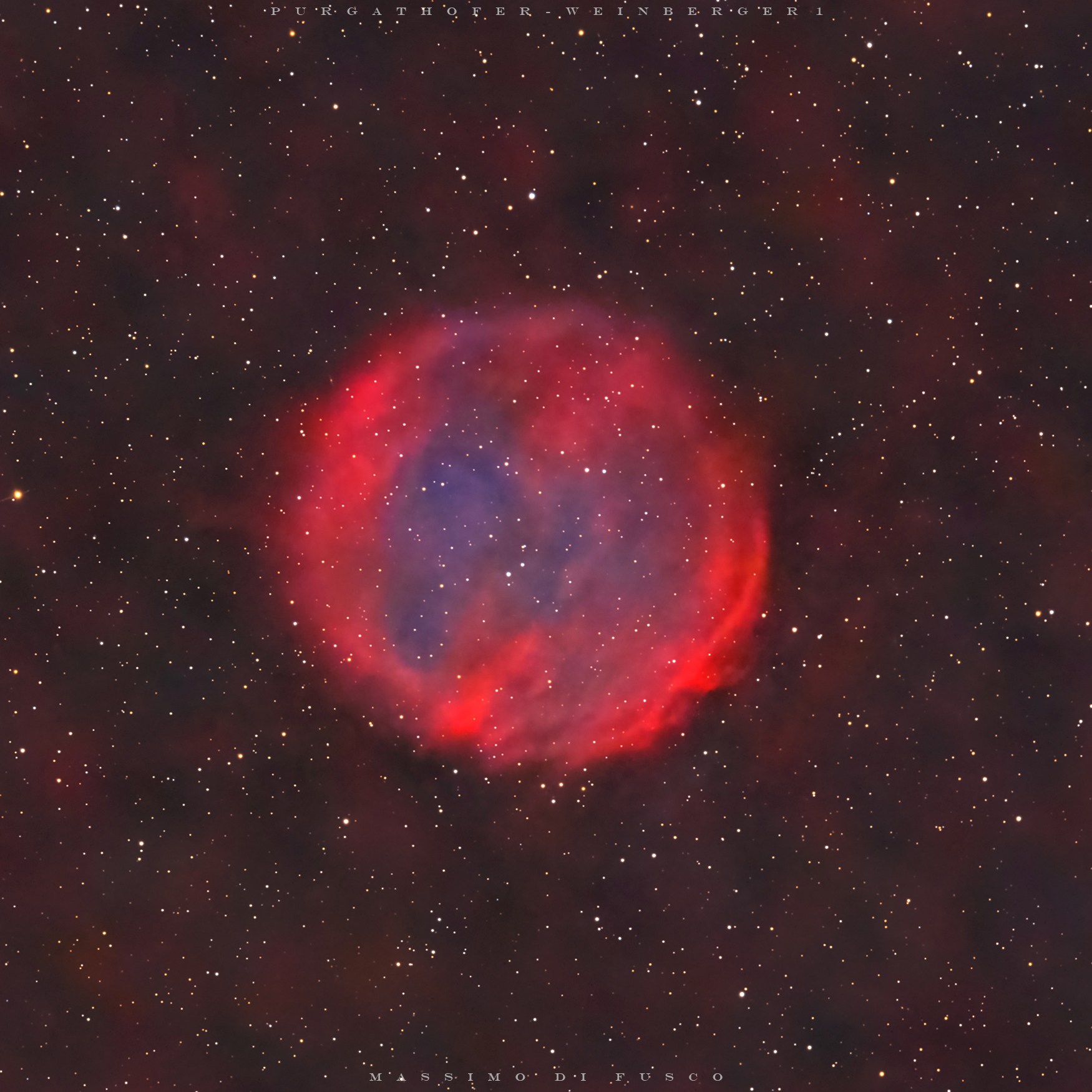The subject of the photo is the planetary nebula known as PuWe1 (Purgathofer-Weinberger 1) or PK158+17.1 + Massimo Di Fusco + L-UItimate, L-QEF
The subject of the photo is the planetary nebula known as PuWe1 (Purgathofer-Weinberger 1) or PK158+17.1
Credit: Massimo Di Fusco (Italy)
Filter: Optolong L-UItimate and L-QEF
I returned to this very faint planetary nebula to try to improve on last year's result, when I had accumulated a beauty of over 63 hours of signal using my 2 telescopes. With this year's signal I almost doubled, exceeding for my first time 100 hours of integration on the same deep-sky object and, I must say, the improvement can be seen especially on the very faint H-alpha signal in the background and that on the contour of the bubble (e.g. the ‘puff’ seen on the left).
The subject of the photo is the planetary nebula known as PuWe1 (Purgathofer-Weinberger 1) or PK158+17.1, located in the constellation Lynx. Discovered by Alois Purgathofer and Ronald Weinberger in 1980 by analysing the plates of the Palomar Deep Sky Survey, PuWe1 is one of the largest and most elusive planetary nebulae visible in our skies, with a diameter of 20 arcminutes (about the size of the full Moon); as well as one of the closest, being at a distance of ‘only’ 1200 light years.
Konus 200/1000 @950mm, f/4.8
Sky-Watcher Evostar ED80 @480mm, f/6.0
Player One Poseidon-C @-5 °C
Sky-Watcher Eq6r Pro mount
Optolong L_Ultimate filter 101x1200’ (ED80 2023)
Optolong L_Ultimate filter 165x600’ (Konus 2023)
Optolong L_Ultimate filter 107x600’ (ED80 2024)
Optolong L_Ultimate filter 483x300’ (Konus 2024)
Optolong L-Quad Enahnce filter 70x180’ (Konus 2024)
N.I.N.A., DSS, APP, PixInsight, PS
Ferrara (Italy)





